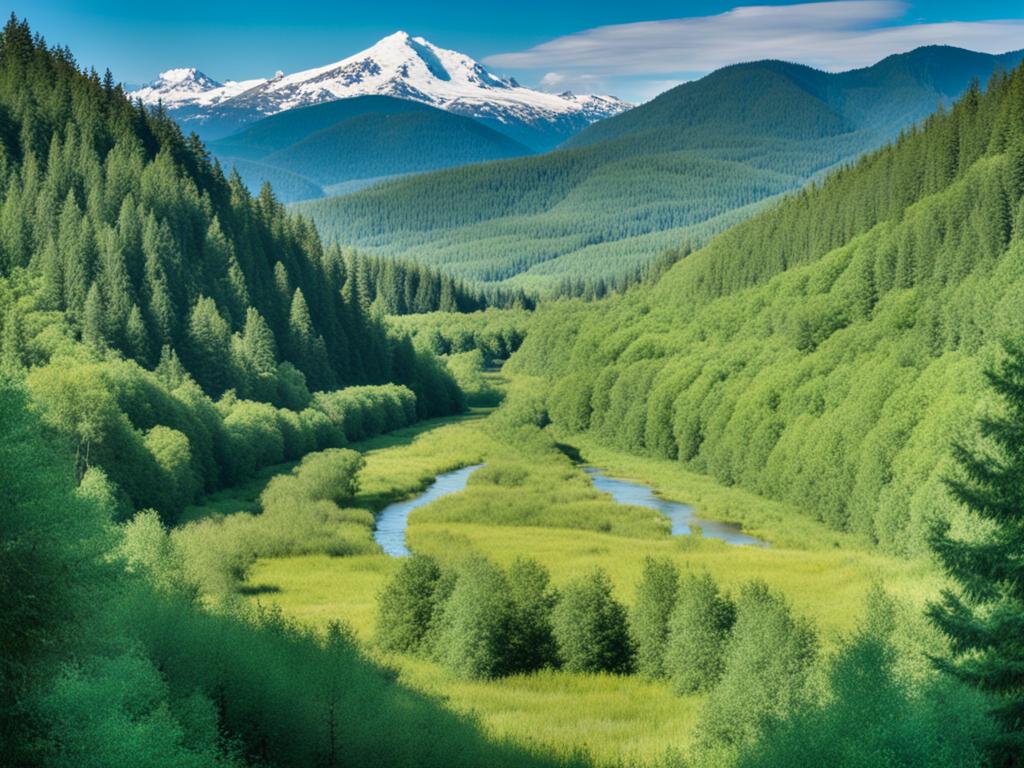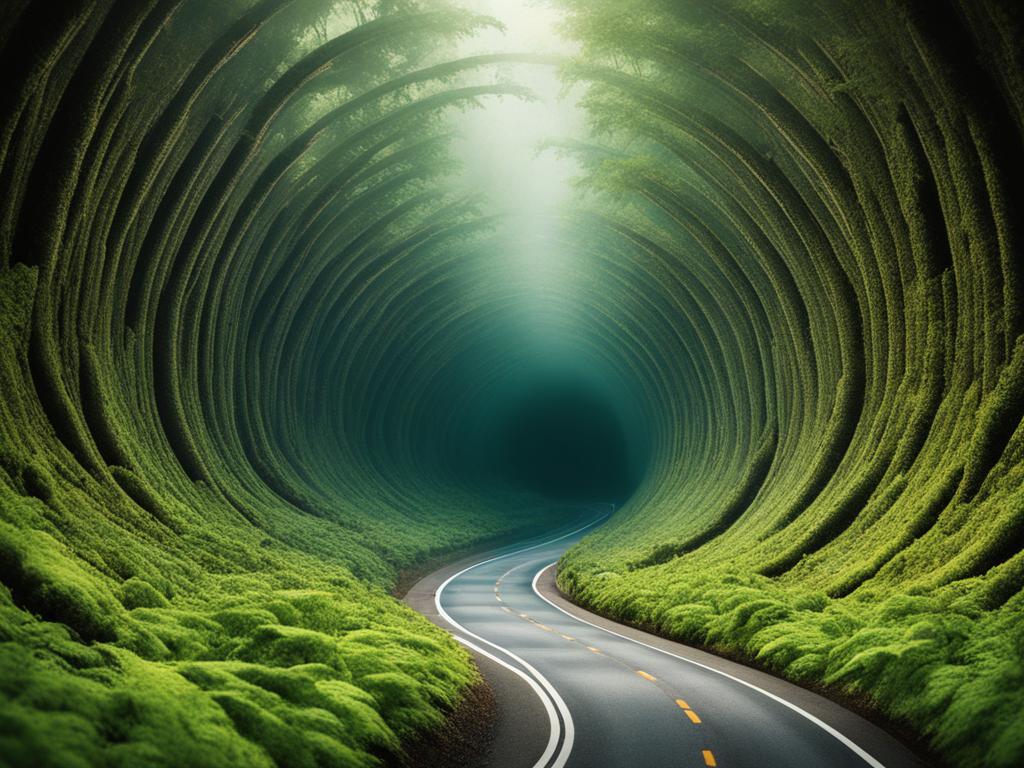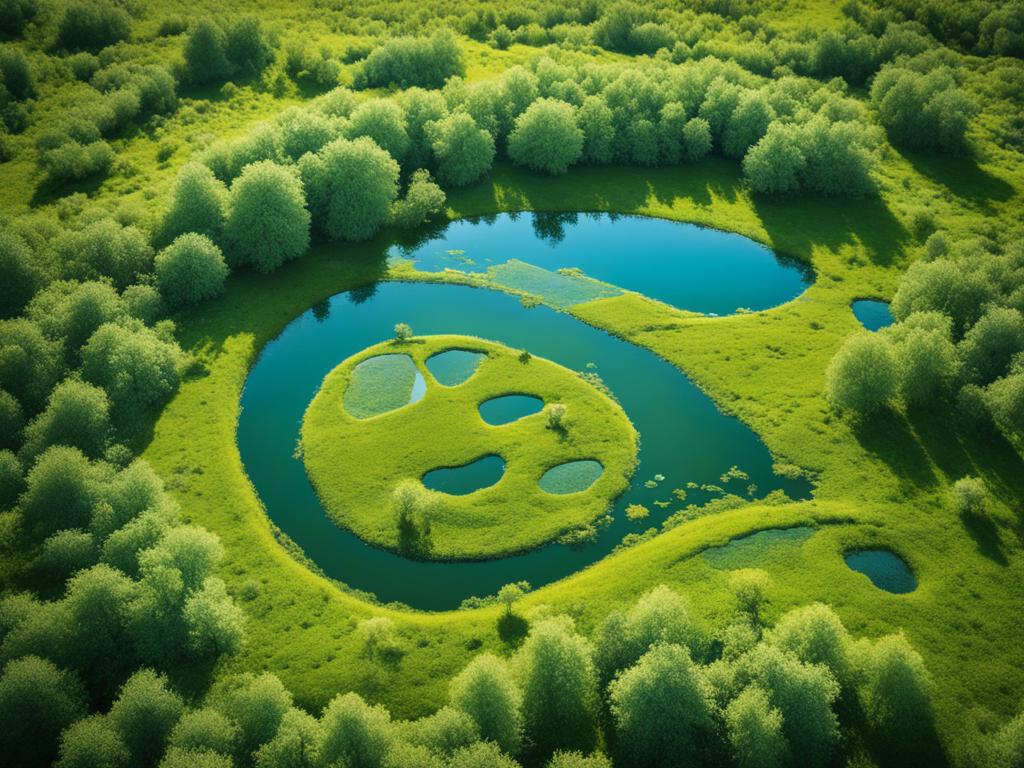Wildlife corridors are vital links that let animals move freely and live full lives. They range from small river parts to huge areas across continents. As humans build more, we split up their living spaces. Corridors then become the critical connections between these split areas. They help keep animals and plants’ genetic diversity going.
Places like the National Elk Refuge in Wyoming are helping. They make sure elk have a safe place to stay in winter. The refuge uses “elk jumps” to keep both animals and people safe. Across the U.S., wildlife refuges work hard to protect these paths. They control water and plants so birds and mammals can migrate safely. These efforts also help endangered species like the Texas ocelot. They build underpasses for them to cross roads safely.
Making sure these corridors stay open and healthy is key for our world’s future. Many creatures and their homes depend on it. It’s all about keeping nature connected and thriving.
Key Takeaways
- Wildlife corridors are vital for biodiversity conservation, enabling safe movement for various species.
- These pathways range from local river stretches to large-scale continental expanses.
- The National Elk Refuge in Wyoming uses “elk jumps” to balance animal movement and human safety.
- Wildlife refuges across the United States manage environments to support migrating birds and mammals.
- Engineered underpasses are created to ensure the safe passage of endangered species such as the ocelot in Texas.
- Maintaining and restoring wildlife corridors is crucial for the long-term viability of diverse ecosystems.
- Efforts in preserving these corridors contribute significantly to ecological connectivity and landscape permeability.
The Importance of Wildlife Corriditions
Wildlife corridors help link habitats for conservation. They are crucial for many species to survive. These paths allow animals to move between isolated habitats. They preserve routes that species need to live.

Enabling Safe Passage for Migrating Species
Wildlife corridors pave the way for safe animal migrations. They keep biodiversity and balance in nature. Elk, mule deer, and pronghorns show the importance of such corridors for traversing vast distances.
In 2019, the Department of the Interior gave $2.1 million to support these paths. This help strengthens the environment for both migratory and stationary species.
Addressing Habitat Fragmentation
Habitat fragmentation splits ecosystems, making survival harder for wildlife. By fixing and keeping up wildlife corridors, we fight these divides. Projects with wildlife refuges and others ensure safe spots for birds to rest during migration.
These efforts improve chances for migrating animals. They also fight habitat fragmentation. This boosts overall ecosystem resilience by linking habitats.
| Species | Migration Routes Supported | Conservation Efforts | Benefits |
|---|---|---|---|
| Elk | Western U.S. | Government Grants | Increased Survival |
| Mule Deer | Rocky Mountains | Corridor Conservation | Genetic Diversity |
| Pronghorn | Great Plains | Stakeholder Collaboration | Resilience of Populations |
Wildlife corridors are key for connecting habitats for conservation. They ensure safe migration paths and boost ecosystem resilience. Working together on conservation lets species flourish despite threats.
Wildlife Refuges and Their Role in Conservation
Wildlife refuges are essential in tackling habitat fragmentation. They support the conservation of biodiversity. These areas offer crucial habitats for many species, helping to keep the ecological balance.

Supporting Migratory Birds and Waterfowl
Refuges are key in linking habitats for conservation, especially for birds on the move and waterfowl. They serve as critical stops for rest and food on migration paths. This ensures birds can successfully finish their extensive travels.
For example, Loess Bluffs in Missouri adjusts its wetlands for migrating birds. It sets up the habitat to meet the diverse needs of ducks and other waterfowl.
Promoting Safe Passage for Large Mammals
Large mammals like deer and elk also gain from refuge systems. These safe places support migrations and work together with neighbors. Projects like restoring the Tualatin River Refuge help fish migrate better, aiding biodiversity.
By offering safe paths, refuges help reduce the bad effects of habitat breaking on animal travel paths.
Strategic management and strong conservation efforts in wildlife refuges protect many species.
Fostering Ecological Connectivity
Ecological connectivity keeps ecosystems healthy and helps wildlife cope. It’s about connecting habitats for conservation. This lets species move freely and adjust to changes. It fights the bad effects of habitat fragmentation.
Since 1989, Conservation Northwest has boosted ecological connectivity in the Pacific Northwest. They work to link up broken landscapes. Their main goal is to save wildlife corridors. This stops human activities from breaking nature’s paths. It helps animals migrate and spread as needed.
Rewilding is becoming popular for bringing nature back. It fixes natural processes and links habitats again. These projects are key to strong ecosystems.
By bringing back native species, rewilding supports diverse life. It’s crucial for making sure habitats are connected. This helps species prosper in their natural homes.
Conservation efforts aim to keep land and water together. This reduces habitat fragmentation. Plans range from wildlife corridors over roads to green spots in cities. These steps boost ecological connectivity. They aid wildlife’s health and ability to adapt.
Innovative Solutions for Habitat Connectivity
Creating ways to connect habitats is about making designs that let wildlife move freely. These methods are key to helping animals cross between places safely. This action boosts the health of ecosystems.

Wildlife Crossings and Underpasses
Wildlife crossings and underpasses help animals cross roads without getting hurt. At the Laguna Atascosa National Wildlife Refuge, special paths have been made for ocelots. These paths let them cross roads without danger.
Such crossings prevent areas from being split apart. They also help bring back more wild areas by linking animal groups together.
Restoring Aquatic Connectivity
For water creatures, removing blocks like dams is vital. At the Tualatin River National Wildlife Refuge, efforts are made to help fish move freely. This is essential for keeping fish numbers up and waters healthy.
By fixing pathways in the water, those working in conservation face the issues of broken habitats. They also help the larger ecosystem stay strong.
| Solution | Example | Benefits |
|---|---|---|
| Wild.animals life Crossings and Underpasses | Laguna Atascosa National Wildlife Refuge | Reduces wildlife-vehicle collisions, supports rewilding |
| Restoring Aquatic Connectivity | Tualatin River National Wildlife Refuge | Improves fish passage, enhances aquatic ecosystems |
These creative answers show how working together on engineering and nature repair makes a big difference. By focusing on connecting both land and water areas, we aim for a better future for animals. We want ecosystems to stay healthy and flexible despite changes in the environment.
Wildlife Corridors: Connecting Habitats for Conservation
Wildlife corridors link different habitats, tackling problems like habitat breakup and loss of species. They can be as simple as gardens for butterflies or as broad as the Yellowstone to Yukon project. These corridors help animals move safely. They keep natural cycles working well.
Laws like the Wildlife Corridors Conservation Act are steps towards saving and reconnecting these natural paths. They show how the health of wildlife and landscapes are linked. Making these connections helps in keeping nature’s diversity and strengthens ecosystems.
In real life, these corridors fill the gaps in nature, helping animals migrate and ecosystems bounce back. They work in both land and water settings, making it easier for species to survive changes. These paths are key in helping wildlife last, even with rapid changes and human growth.


